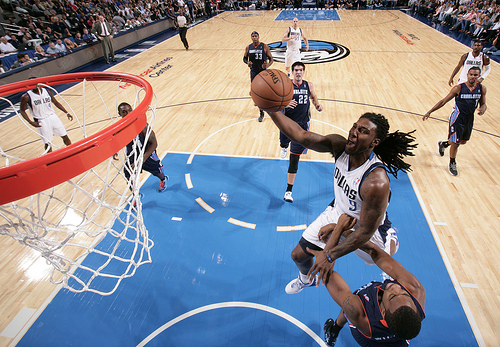Full Court Press Mentality: Accepting Lay-ups

The Full Court Press is one of the very special defences a team can utilise to play attacking basketball without being in possession of the ball. The Full Court Press can provide a number of positives for a team such as scoring in runs and decreasing an opponent’s lead quickly. If performed poorly however a Full Court Press can become an Achilles Heel for a team resulting in easy scoring opportunities. One of the more common sighted indications of a struggling or poor Full Court Press is the ability for the offense to break the trap and make lay-ups.
Scoring Happens

No defence in the modern game of basketball can be a solution to all the problems a team is likely to face from an ever expanding range of offenses. Look through the countless resources available around developing an offensive system and there is literally millions of articles, books, philosophies and tweaks developed every year. Not only at the elite level but also from the humble coach within the school gym refining their coaching craft.
To meet this offensive onslaught, defences will also need to develop and adapt. A weakness however is all about perspective, and with regards to a Full Court Press this is really about what a coach is willing to give an offense in exchange for taking away other opportunities. For a Full Court Press the balance of risk and reward is focused around defensive pressure extending into the full court. Every inch of the court becomes an opportunity to a deflection, steal and backcourt or shot clock violation. The risk is that an offense may break the Full Court Press and make lay-ups or quick scoring opportunities. How this is evaluated within a game is for the coach to analysis, but just because an offense makes a lay-up does not mean the defence is broken. No defence is successful a hundred percent of the time, in fact, many coaches would be happy with a lot less.
No Uncontested Lay-ups
When looking at the possible outcomes from a broken Full Court Press one of the results can be a lay-up. This however, is very different to an uncontested shot. Just because a lay-up is the final shot does not mean it should be uncontested. Defenders when behind the ball should be drilled to recover in a specific way so to limit the possible chances of an easy scoring opportunity. Scrambling defensive transition is still part of the game, even when employing a Full Court Press.
Part of the implementation of a Full Court Press is for players and coaches to understand how to react to when the Full Court Press in broken. Where should each player move to and what should they be looking for. As this understanding and additional increased commitment to recovering in transition is implemented, over time the number of lay-ups should start to decrease even in broken trap situations. While a shot may not be stopped, the further away from the basket it is taken the less successful it becomes. So turning a lay-up into a mid-range jump shot can have a significant effect on an oppositions completions against the press.
Fast Break
One of the more common phenomenon that happens as a result of a lay-up is both the defence and offense tend to stall. The defence becomes deflated from the points being scored and therefore the trap being broken. While the offense feels, they have survived a very challenging situation and react by taking a breath.
A Lay-up for the defence should signal the opportunity for a Fast Break or explosive Primary Transition against the fully extended offense. Offensive players can be very slow in changing from offense to defence especially when facing a Full Court Press. This should be exploited often so even if the offense expends effort to break the trap, they then have to turn and sprint the stop a basket at the opposite end of the floor. This a key to attacking basketball and the mindset behind an effective press.
Fatigue
One warning sign related to lay-ups against a Full Court Press is fatigue. A defensive team and coach need to be very vigilant concerning the exposure of a team to too high an energy commitment when using a Full Court Press. If lay-ups are the result of the players running on empty there either needs to be a rotation of fresh players or a change in the defensive strategy being employed.
If looking to use a Full Court Press then a team needs to practice under fatigued conditions so the likelihood of poor performance as a result can be gradually reduced. Through training and development of greater stamina a team’s Full Court Press will improve and the ability to convert more points from this tactic will increase.
The Full Court Press has always been a very solid tactic due to the challenge in presents to players with the ball about what they can do and what their teammates must do. Forcing offensive players to make reads and choices leads to problems if the individuals are not well drilled. Lay-ups though should not be the only measure a coach is concerned with. Think about a Full Court Press in the context of the game, is it really being exploited any more regularly than your other defensive options?
Related articles







Leave a Reply